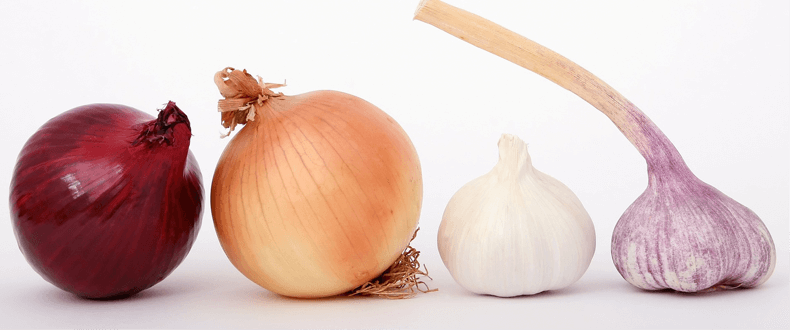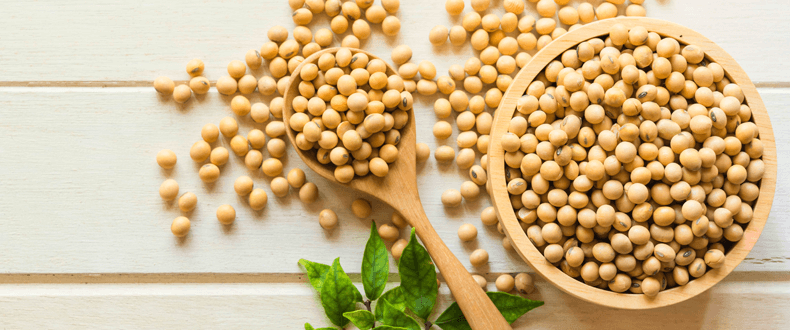Allium intolerance is a condition in which a person has difficulty digesting foods from the Allium family, such as onions, garlic, shallots, leeks, and chives. This can result in symptoms such as bloating, flatulence, and abdominal pain after consuming these foods. Some people with allium intolerance may have a sensitivity to the sulphurous compounds present in allium vegetables, while others may have a specific enzyme deficiency that affects their ability to digest these foods.
What are Allium foods?
Allium foods are a type of vegetable that belong to the Allium genus, which includes:
- Onions
- Garlic
- Shallots
- Leeks
- Chives
- Scallions
- Ramps
- Welsh onions
What Are The Most Common Allium Intolerance Symptoms
The most common symptoms of allium intolerance include:
- Bloating
- Abdominal pain
- Flatulence (excessive gas)
- Diarrhoea
- Nausea
- Reflux
It is important to note that symptoms can vary from person to person and may not appear immediately after consuming allium-containing foods. Some people may experience symptoms after consuming moderate amounts of these foods, while others may only have symptoms after consuming larger amounts.
What’s The Difference Between An Allium Intolerance And An Allium Allergy
An allium intolerance and an allium allergy are two different conditions. An allium intolerance is caused by the inability to digest certain members of the allium family, such as garlic and onions. Symptoms of an allium intolerance may include abdominal discomfort, bloating, diarrhoea, and flatulence. An allium allergy is caused by an immune reaction to certain proteins found in allium plants. Symptoms of an allium allergy can range from mild to severe, and may include hives, swelling, difficulty breathing, and anaphylaxis. It is important to note that an allium allergy is very rare, and most people who think they are “allergic” to alliums are actually intolerant.
It is important to differentiate between an allium intolerance and an allium allergy, as treatment for the two conditions may be different. An allergist or immunologist can perform skin tests or blood tests to determine whether a person has an allergy or intolerance to allium foods.
What foods should I avoid if I have an Allium intolerance
If you have an allium intolerance, particularly an onion intolerance, it is important to avoid foods containing members of the allium family. Common sources of alliums include garlic, onions, scallions, shallots, leeks, chives, and ramps. You should also be sure to read labels on packaged foods, as many contain either alliums or allium-derived ingredients such as garlic powder or onion powder. Additionally, some vinegars and sauces may contain alliums or allium derivatives. It is important to be aware of hidden sources of alliums and to practise safe food handling to avoid accidental consumption. You may find that you tolerate some of the allium foods better than others.
What foods can I eat if I have an Allium intolerance
If you have an allium intolerance, there are still many delicious and nutritious foods you can enjoy. Fruits, vegetables, and grains that do not contain alliums can be safely enjoyed. For example, you can eat apples, bananas, bell peppers, carrots, potatoes, brown rice, quinoa, farro, oats, and flax. You can also enjoy other proteins, such as lean meats, fish, beans, nuts, and eggs. Additionally, dairy products such as yogurt and cheese are safe to eat. Be sure to read labels of packaged foods to avoid any hidden alliums, and practise safe food handling when preparing meals.
Here are some allium-free recipes that you may find enjoyable:
- Grilled Chicken Salad: Marinate chicken breasts in a mixture of olive oil, lemon juice, salt, and pepper, then grill until cooked through. Serve the chicken over a bed of greens, along with cherry tomatoes, cucumber, and avocado.
- Broiled Salmon: Season salmon fillets with salt, pepper, and a squeeze of lemon juice, then broil until cooked through. Serve with a side of steamed or roasted vegetables, such as asparagus, green beans, or Brussels sprouts.
- Vegetable Stir-Fry: Heat oil in a wok or large skillet, then stir-fry diced carrots, bell peppers, snap peas, and mushrooms until crisp-tender. Season with a mixture of soy sauce, hoisin sauce, and rice vinegar, then serve over steamed rice.
- Cauliflower Rice Bowls: Cut a head of cauliflower into florets and pulse in a food processor until the mixture resembles rice. Cook the cauliflower rice in a pan with a bit of oil, then top with cooked chicken or tofu, diced avocado, and a drizzle of sriracha or chilli sauce.
Managing Allium Intolerance: Finding Relief
Allium intolerance can cause uncomfortable symptoms, but don’t let it dictate your diet completely. Understanding the issue and carefully selecting what you eat lets you enjoy a wide variety of fulfilling and healthy meals. There are numerous delicious alternatives that add flavour and depth to your food without the distress alliums might cause.
If you suspect an allium intolerance is causing you problems, a simple test can help pinpoint the issue. Consider trying one of our food intolerance tests for clear guidance on foods to enjoy and those to avoid, restoring balance to your diet.










